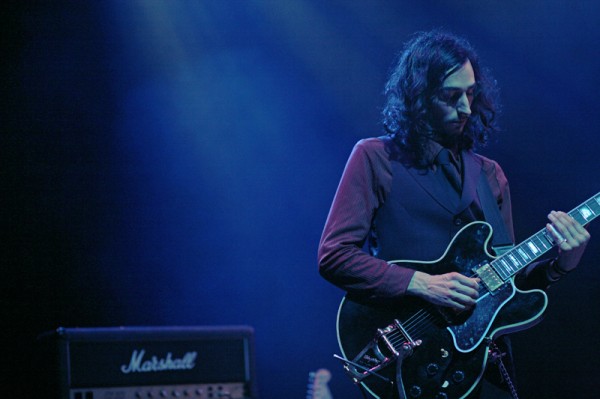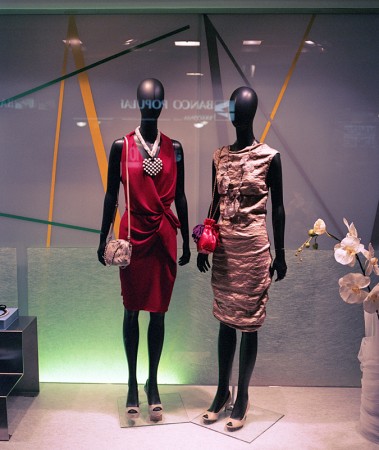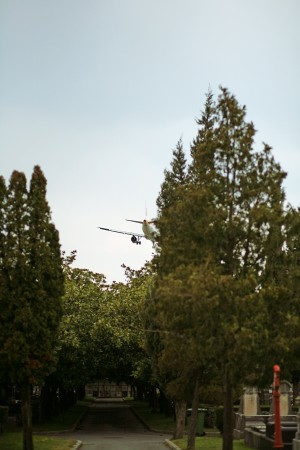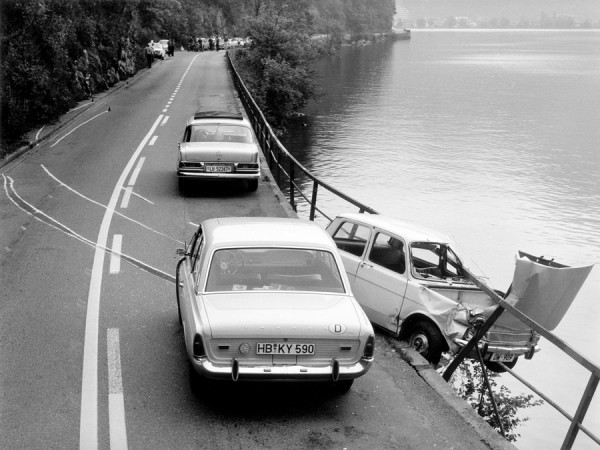Un regalo de Navidad tardío. Hace poco recibí el que, a día de hoy, es el libro de fotos más bonito que tengo, y sin duda uno de los mejores que he visto. Se trata de Niagara, de Alec Soth. Es una edición grande y lujosa, con cubiertas grabadas y una calidad de impresión extraordinaria. Las fotos están muy bien –obviamente– aunque, como suele pasar en los buenos libros de fotografías, lo mejor se encuentra detrás de ellas. Para quien no lo sepa, las cataratas del Niágara no son solo un símbolo emblemático en la cultura americana, sino un elemento de paso obligado en la lista que conforma el American dream, junto a cosas como tener un perro grande y bueno, una casa con jardín o un negocio que florece. Ir de viaje de novios a las cataratas del Niágara ha sido durante décadas sinónimo de romanticismo americano, una especie de estandarte de amor almidonado y patriótico. Algo así como llevar a tus niños a Disneylandia. Alec Soth, tras ver unas fotos de la luna de miel de sus abuelos, decidió buscar historias de amor reales en los municipios que rodean las cataratas. Abordaba a descocidos en bares, en la calle, etc., preguntándoles si conservaban cartas de amor del pasado; aprovechaba de paso para presentarse como fotógrafo y pedirles permiso para quedar con ellos y con sus parejas y retratarles. De esta manera, y a lo largo de varias semanas, Alec crea una extensa red de relaciones personales que, a través de las imágenes y las historias que narra, describen el lado más crudo del amor. Relaciones tormentosas, pasiones imposibles y forzadas. Muy poco queda de lo que representan las cataratas. A pesar del contenido explícito de las fotos, son las cartas lo más visceral del libro. Trozos de papel arrugado, con garabatos llenos de faltas de ortografía que supuran sudor y lágrimas. Y lo mejor de todo es el apéndice final: después de las fotografías, hay una especie de facsímil del cuaderno de viaje de Alec Soth, donde da detalles de cómo conoció a cada sujeto, las historias que le contaron, etc. No puedo recomendarlo más. En la contraportada hay una cita extraída de una de las cartas que resume muy bien el espíritu del libro:
“Si tuviéramos un buen apartamento
y si yo tuviera un trabajo decente
y si tú fueras feliz
y si pensaras que podríamos tener una historia bonita juntos,
¿volverías a casa?”
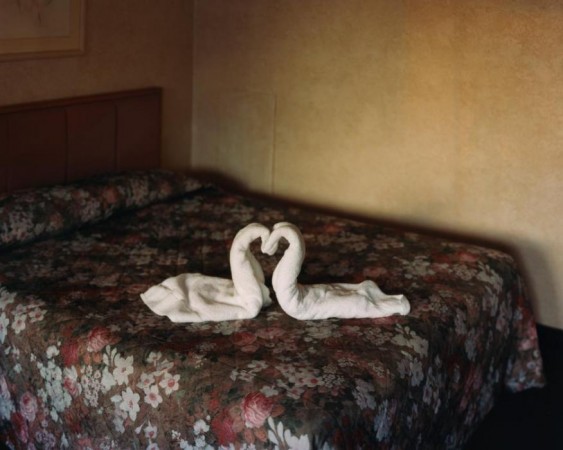 © Alec Soth
© Alec Soth
A Christmas present from my girlfriend that arrived a bit late. I recently received a book that, today, is the most beautiful book of photographs I have, and certainly one of the best I have ever seen. It is Niagara, by Alec Soth. It is a large, luxurious hardback edition with engraved covers and exceptional print quality. The photos are obviously great, but, as often happens with good books of photographs, the best part is behind them. For those who do not know, Niagara Falls are not only an iconic symbol of American culture, but a mandatory item on the list that makes up the American dream, along with things like having a large, well-behaved dog, a house with a garden or a flourishing business. For decades, going to Niagara Falls on your honeymoon has been synonymous of American romanticism, some kind of old-fashioned icon of love and patriotism. Something like taking your kids to Disneyland. Alec Soth, after finding some pictures of his grandparents’ honeymoon, decided to look for real love stories in the area surrounding the Falls. He used to approach strangers in bars, on the street, etc.., asking if they had kept any love letters from the past. He used the opportunity to introduce himself as a photographer and ask their permission to meet them and their partners in order to portrait them. In this way, and over several weeks, Alec creates an extensive network of personal relationships, through images and stories, describing the rawest side of love. Stormy relationships and impossible, forced passions. Very little is left of what the Falls represent. Despite the explicit content of the photos, the love letters are undoubtedly the most visceral part of the book. Creased pieces of paper with scribbles full of spelling mistakes, sweat and tears. The best part of the whole book is the final addendum: after the photographs there is a sort of facsimile of Alec Soth’s travel notebook, which contains details about how he met each subject, the stories they told him and so on. I cannot recommend this book more highly. On the back cover, there is a quote from one of the love letters that summarizes well the spirit of the book:
“If there was a nice apartment
and I have a decent job
and you felt happy
and thought there could be a nice history together,
would you come home?”




